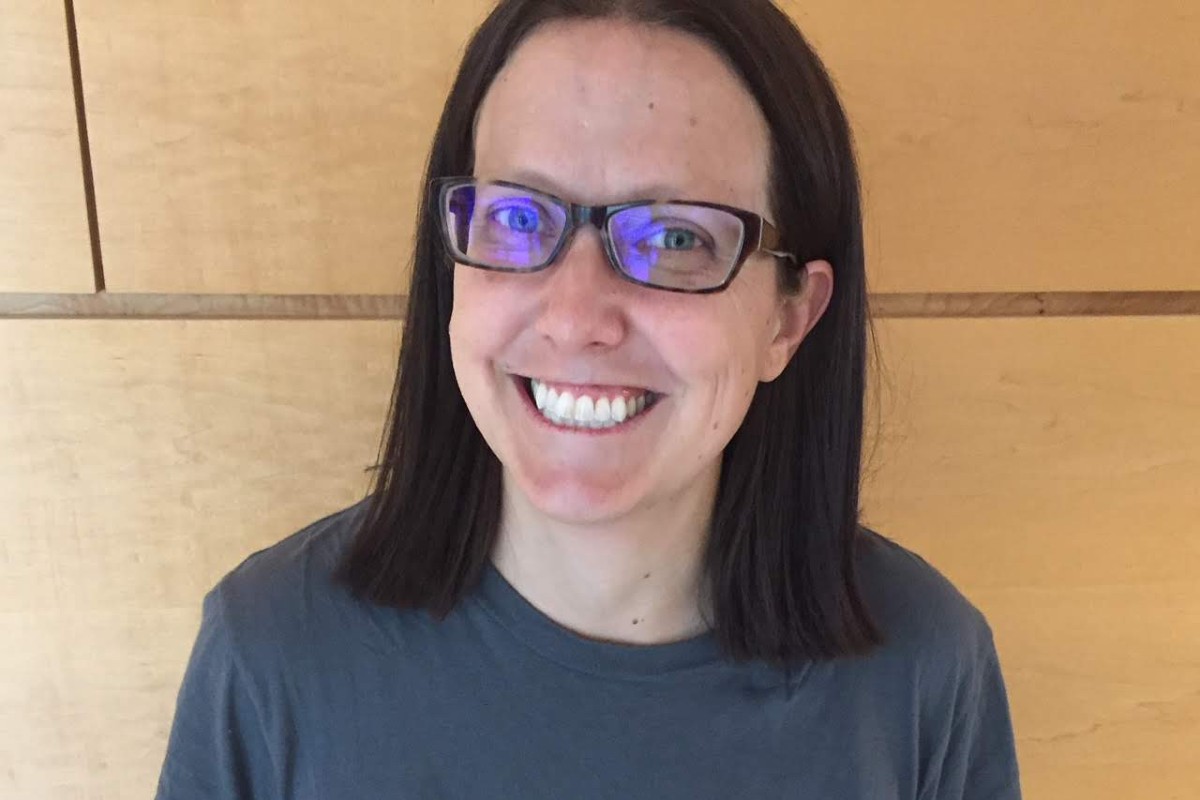
Colleen Lewis, assistant professor of computing science at the University of Illinois, delivered a talk to University of Alberta computing scientists on inclusive teaching practices. Image provided.
Computing science instructors at the University of Alberta sought out expert advice on incorporating inclusive teaching practices in order to foster a culture of equity, diversity, and inclusivity.
The Department of Computing Science welcomed Colleen Lewis, assistant professor of computing science at the University of Illinois, for a talk on strategies to ensure equity and inclusivity in the classroom.
An expert in developing more equitable and effective practices in the field of computing science, Lewis strives to make computing science more accessible through understanding and optimizing learning as well as identifying and removing barriers.
“Integrating inclusive practices in your classroom can have a differential benefit for students of color, women, and first-generation college students,” said Lewis. “It takes everyone working together to address cultural and structural barriers— and that also means that there are lots of ways to contribute.”
Weren’t able to join the lecture? You can check out the recording, available here. Read on to learn more about Lewis and her experience
Tell me about your experience with the issues of equity, diversity, and inclusivity in STEM.
In my research, I aim to understand and improve computing science education to make it more equitable and effective. In addition to writing research papers about the topic, I have a project called CS Teaching Tips through which I try to support teachers in adopting inclusive teaching practices.
What are some of the barriers that exist in the field of computing science specifically?
It is helpful to think about structural and cultural barriers separately. Both are driven by racism and sexism, but the solutions to structural and cultural barriers will likely take different forms.
A primary driver of cultural barriers in computing science are stereotypes that our current socially constructed racial categories are indicative of a person's intelligence. These stereotypes were invented by people with racist intent, but are perpetuated in everyday comments and assumptions. Since computing science is stereotyped as requiring innate intelligence, people who are falsely stereotyped as intellectually inferior (e.g., Black/African American people, Hispanic/Latinx people, Indigenous people, and women of all races) are seen as less innately able to participate in computing science.
How can we dismantle these barriers to foster diversity in research and in the classroom?
It takes everyone working together to address these cultural and structural barriers! That also means that there are lots of ways to contribute. I've worked this past summer with the Computing Research Association to identify resources to help broaden participation in computing, which are posted on BPCnet.org.
What inspired you to take on the issue of diversity in STEM in your own work?
As a professor, I'm in a position of power within my class and in my department. That means I have the responsibility to interrogate my policies and practices—and the policies and practices of the institution—to see how we can reduce structural and cultural barriers. Beyond my responsibility as an individual, I try to help other people do this, too. And I focus my research on ways to be more effective in creating inclusive environments and broadening participation in computing.
What advice would you give to your fellow instructors, researchers, and/or students looking to address these issues?
In my talk, I share strategies for the classroom, but regardless of our role, it is important to learn about racism, sexism, and ableism. Learning about these and other “-isms” can help us have our positive intention (e.g., we don't mean to be racist) better align with our impact on others. Unfortunately, our positive intent doesn't always mean we'll have a positive impact.
In addition to learning, we also need to be ready to say “I’m sorry what I said/did was hurtful.” Certainly, my instinct is to say "I didn't mean to be hurtful"—but my intention isn't what matters and I need to be ready to apologize.